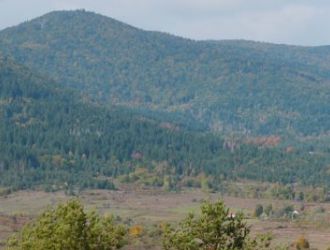Otočac
_880_330_80_s_c1.jpg)
Lika destination area - Otočac
- Kralja Zvonimira 10, 53220, Otočac
- 053 771 158
- 053 771 158
- info@otocac.hr
- web
This border fortress Otočac is on the Gacka river and this part where the captain and most of the crew reside is surrounded by a wall with several towers where there is a church of the Mother of God and a chapel of Saints Fabijan and Sebastian. The rest of the crew and most of the population live outside the fort, but in the middle of the water, so they drove thick stakes into the water and built houses plastered with mud on them. These houses stand so nicely next to each other, so they look like a city and have roads and streets where you can drive boats. But the houses do not stand next to each other, but each one stands freely in the water, so that the neighbor has to use a boat if he wants to reach the neighbor. J. W. Valvasor, Die Ehre der Herzogthmus Crain, 1689.
Otočac (4,203 inhabitants) is the center of Gacka and the seat of the City. It belongs to one of the oldest settlements with Croatian life. It is mentioned for the first time on the Bašćanska tablet from the end of the 11th century (1100), that corner stone monument of Croatian literacy and culture. At that time, the Benedictine monastery of St. Nicholas in Otočac is connected with the monastery of St. Lucia in Baška on the island of Krk. However, historians believe that Otočac is much older than that time, and that Prince Born probably had one of his seats in Otočac at the beginning of the 9th century.
Otočac owes its name and survival to a river island. Until the 18th century, Otočac was located on a natural islet in the middle of the Gacka River. The island was fortified with walls and towers for defense. It could only be approached by boat across the water. This made it impregnable and in its long history Otočac was never an occupied city. In the area of the city, there are traces of human life in ancient times. The Japods lived in the castles in Umac and Vinica, while the Zorisnjak castle was not far from Stari Selo. These forts have not been investigated in detail archaeologically.
The first preserved grant document about Otočac dates from 1300, when the Neapolitan king Charles II. donates the land and the town of Otočac to Dujma II. Prince Krčko. The princes of Krk, later called the Frankopans, fortified the city, built churches and encouraged culture and literacy. Throughout the long tenure of almost three hundred years, the Krčki stayed in Otočac: Dujam II, Fridrik III, Žigmund (Sigismund) and Martin Frankopan. It was during the time of Žigmund that Otočac experienced its heyday. On March 5, 1460, Mr. Pope Pius II. he founded the diocese of Otočka, the collegiate church of St. Nicholas raised it to a cathedral, and Otočac received the status of a city (civitas) by papal charter.
In 1619, the military administration of Krajina built the fortress Fortica above Otočac on the hill of the same name and thus finally prevented the Turks from occupying Otočac and prevented their penetration towards Primorje and Senj. Otočac began to develop outside the city walls only in the middle of the 18th century, when the Turkish threat finally subsided and it became the headquarters of the Island Regiment. In 1746, Empress Maria Theresa made the city a large trading center. Already in 1727, she founded a trivial school in Otočac, and in 1782, the main school in Krajina began to operate. In 1870, the boys' school was turned into a civil school. In 1844, the Croatian general Nikola Maštrović founded a theater in the city that gave plays in German and Croatian. In 1873, a public reading room was established, which continues to operate to this day, and which was supported by the great Croatian patron, Bishop Josip Juraj Strossmayer of Čakovec-Srijem.



__velika_230_230_80_s_c1.jpg)
__velika_230_230_80_s_c1.jpg)
__velika_230_230_80_s_c1.jpg)
__velika_230_230_80_s_c1.jpg)
__velika_230_230_80_s_c1.jpg)
__velika_230_230_80_s_c1.jpg)
__velika_230_230_80_s_c1.jpg)
__velika_230_230_80_s_c1.jpg)
_330_250_80_s_c1.jpg)
_330_250_80_s_c1.jpg)
_330_250_80_s_c1.jpg)
_330_250_80_s_c1.jpg)
_330_250_80_s_c1.jpg)
_330_250_80_s_c1.jpg)
_330_250_80_s_c1.jpg)
_330_250_80_s_c1.jpg)
_330_250_80_s_c1.jpg)
_330_250_80_s_c1.jpg)
_330_250_80_s_c1.jpg)
_330_250_80_s_c1.jpg)

_330_250_80_s_c1.jpg)
_330_250_80_s_c1.jpg)